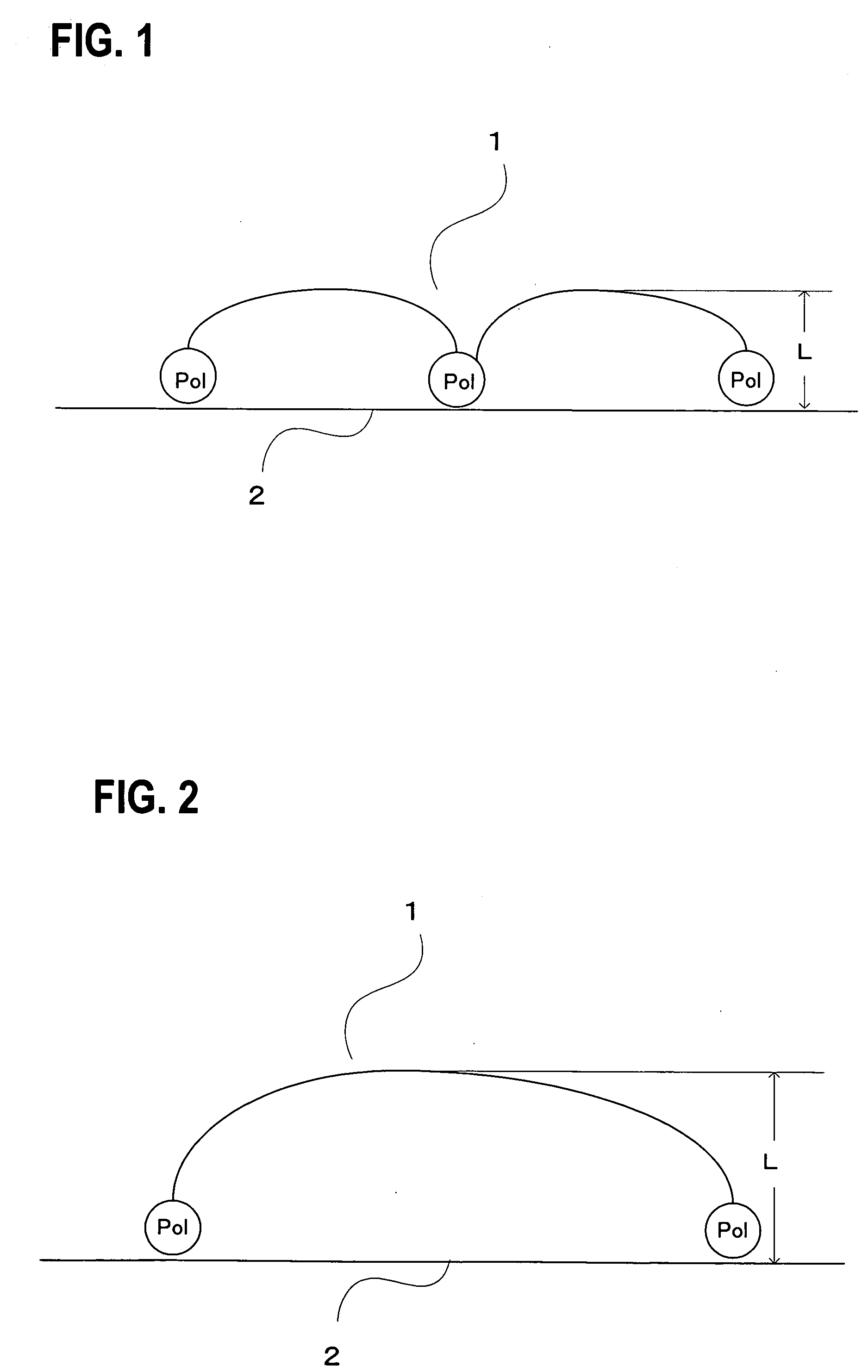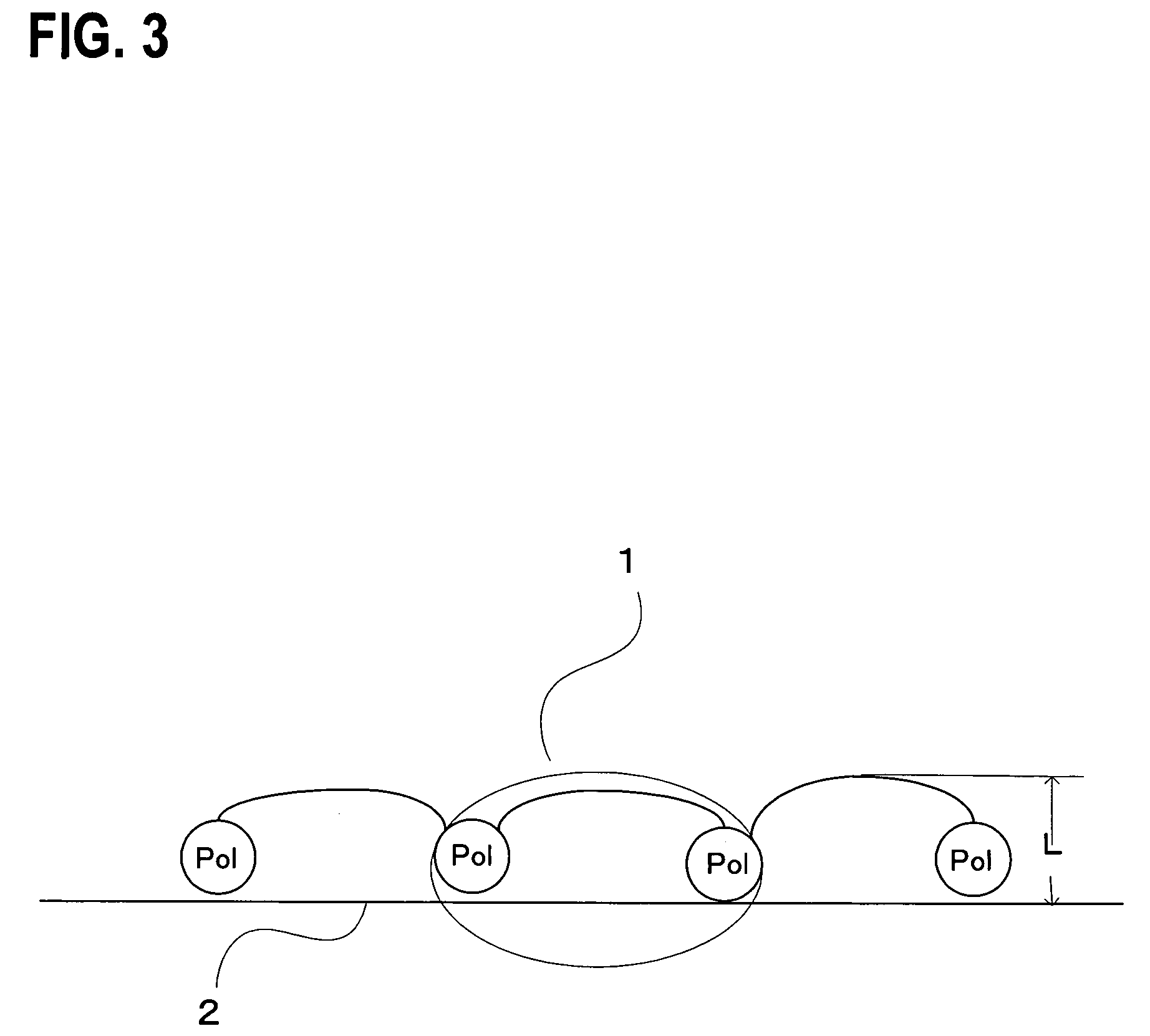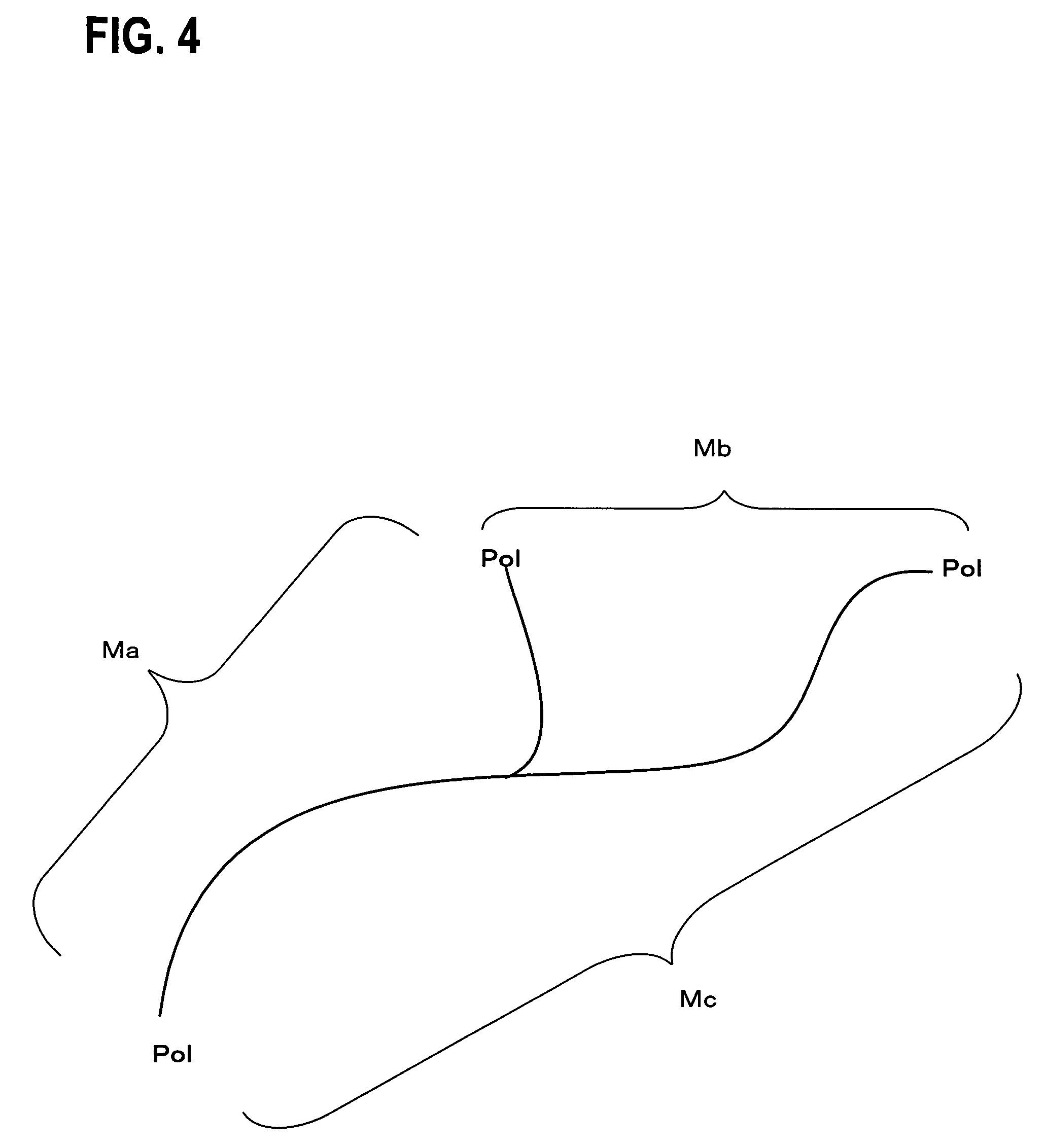Lubricant, magnetic recording medium and head slider
a technology of magnetic recording medium and lubricant, which is applied in the field of lubricant for magnetic recording devices, can solve the problems of reducing the coverage of lubricant, affecting the flight stability of the head, and the inability to make the lubricant film thickness smaller, so as to achieve the effect of increasing reliability, small film thickness and avoiding the loss of flying stability
- Summary
- Abstract
- Description
- Claims
- Application Information
AI Technical Summary
Benefits of technology
Problems solved by technology
Method used
Image
Examples
example 1
(Synthesis of a Lubricant)
[0090]To 500 mL of acetone were added 100 g of FOMBLIN Z DOL which was commercially available (a product from Solvay Solexis, corresponding to a structure represented by formula 2 wherein x=y=0, molecular weight being 2,020) and 0.125 mole of epichlorohydrin. An aqueous solution formed by dissolving 0.11 mole of sodium hydroxide in 5 g of water was added dropwise into the mixture under good agitation for ten minutes. The mixture was heated and refluxed for 8 hours.
[0091]After that, acetone was evaporated, using an evaporator, 25 g of trifluoroacetic acid and 250 mL of water were added, and the mixture was stirred at 70° C. for 3 hours. A deposit was recovered, and was washed with water at 80° C.
[0092]It was determined by FT-IR, 1HNMR, 13CNMR, and 19FNMR that this polymer had a molecular structure represented by formula 1 wherein n=a=b=0, and δ=1. FIGS. 5-8 shows some of the resultant spectra. From the 19FNMR, it was determined that the number-average molecu...
example 2
(Measurement of a One-Molecule-Layer Film Thickness)
[0094]The one-molecule-layer film thickness can be obtained, as described in X. Ma et al., “Journal of Chemical Physics”, 1999, Vol. 110, p. 3,129-3,137, from the terrace structure (see A in FIG. 9) which appears when a lubricant is being fluidized (see FIG. 9), through the observation with an ellipsometer of the time-dependent change of the cross-sectional profile of a lubricant film thickness.
[0095]The lubricant Fr4 was applied to a part of a protective layer of a hard disk by means of a dip method, and the time-dependent change of the cross-sectional profile of the lubricant film thickness was observed. As a result, as shown in FIG. 9, a terrace structure appeared, and the film thickness of the terrace was determined to be 1.74 nm (that is, the one-molecule-layer film thickness). The smaller value of the part at the left of FIG. 9 indicates the protective layer surface to which no lubricant was coated. It is thought that the val...
example 3
(Synthesis of a Lubricant)
[0100]To 500 mL of acetone were added 100 g of FOMBLIN Z DOL TX which was commercially available (a product from Solvay Solexis, molecular weight being 2,000, the average value of x, y being 1.73, see formula 31 for the structure) and 0.125 mole of epichlorohydrin. An aqueous solution formed by dissolving 0.11 mole of sodium hydroxide in 5 g of water was added dropwise into the mixture for 10 minutes under good agitation. The mixture was heated and refluxed for 8 hours.
[0101]After that, acetone was evaporated, using an evaporator, 25 g of trifluoroacetic acid and 250 mL of water were added, and the mixture was stirred at 70° C. for 3 hours. A deposit was recovered, and was washed with water at 80° C.
H—O(CH2CH2O)1.73CH2CF2O(CF2CF2O)p(CF2O)qCF2CH2(OCH2CH2)1.73O—H (31)
[0102]It was determined by FT-IR, 1HNMR, 13CNMR, and 19FNMR that this polymer had a molecular structure represented by formula 32. From the 19FNMR, it was determined that the number-average mol...
PUM
| Property | Measurement | Unit |
|---|---|---|
| thickness | aaaaa | aaaaa |
| diffusion coefficient | aaaaa | aaaaa |
| viscosity | aaaaa | aaaaa |
Abstract
Description
Claims
Application Information
 Login to View More
Login to View More - R&D
- Intellectual Property
- Life Sciences
- Materials
- Tech Scout
- Unparalleled Data Quality
- Higher Quality Content
- 60% Fewer Hallucinations
Browse by: Latest US Patents, China's latest patents, Technical Efficacy Thesaurus, Application Domain, Technology Topic, Popular Technical Reports.
© 2025 PatSnap. All rights reserved.Legal|Privacy policy|Modern Slavery Act Transparency Statement|Sitemap|About US| Contact US: help@patsnap.com



